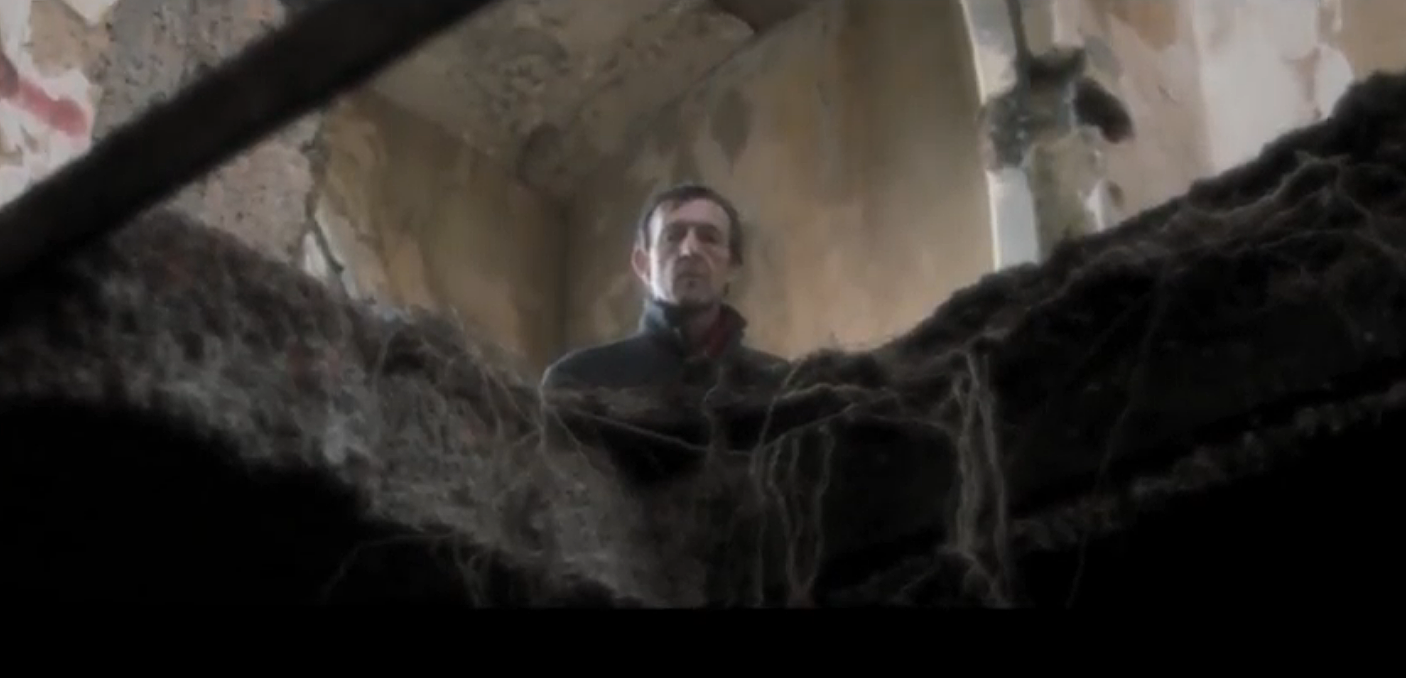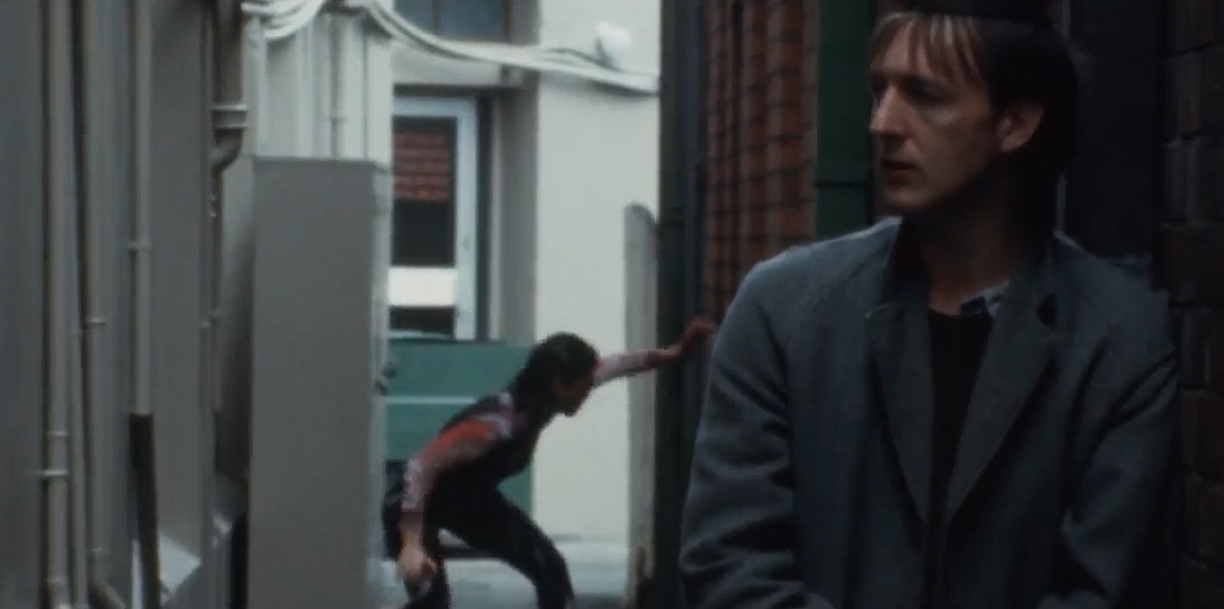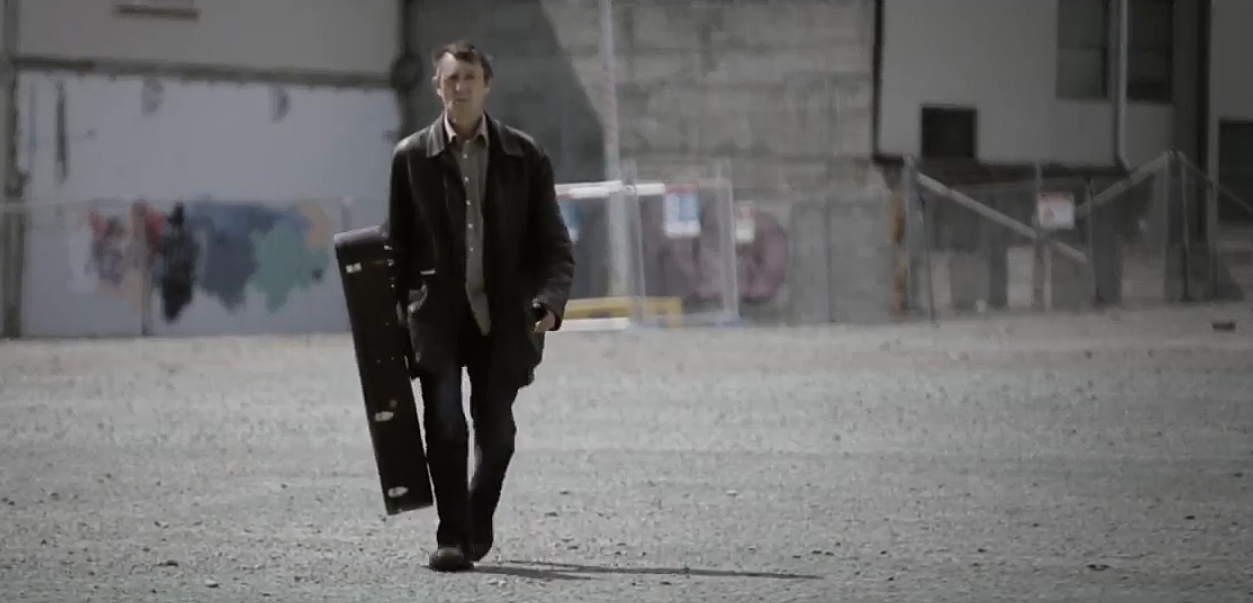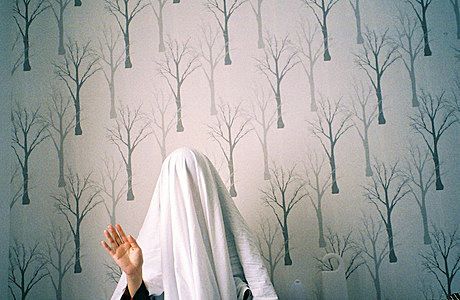If You Stand By This Tree Long Enough, They'll Make You The Fucking Queen: Bill Direen and A Memory of Others.
Campbell Walker on Simon Ogston's Bill Direen documentary, and his own experience with the musician.
Simon Ogston's new film about Bill Direen, A Memory of Others, screening around the country at this year's New Zealand International Film Festivals, is an elegant, coherent film about a brilliant artist with a decidedly inelegant, messy and complex 40-year career. Campbell Walker looks through his own baggage to find some ways to reconcile the film with the artist.
Should pay some bills but I'll go for a walk instead[1]
I often find documentaries on the arts in New Zealand, regardless of topic, doing much the same thing. They're a view from and for the centre, an attempt to provide evidence as to the value of an artist's body of work in a digestible summary for the people who can't be there themselves. This is important work, providing a heft of credibility to the work of people that are sometimes overlooked in a small, provincial culture like New Zealand where we don't attach too much value to our artists, but give plenty of airtime to their naysayers.
I hate these kinds of films. I hate the idea of trying to cram a oeuvre of 40 years into a precis of 90 minutes, and I hate the way this process leads to the inevitable triumph of the simplest or loudest elements of an artist's corpus. Here, I follow the teachings of the great British renegade documentarian Peter Watkins, who talks about the pervasive effect on audiences of what he calls the Universal Clock approach to documentary. This is a one-size-fits-all consumption model that tends to sand off all the edges that make complex work interesting. I bitterly resent the idea that art is just a nice to have, something we fit into our leisure time consumption models, and I have trouble with only valuing the art we can fit into our time off from the capitalist work cycle.
Bill Direen wouldn't do this. He'd probably do the opposite. Direen's work has always resisted simple pigeon-holing, partly because its singular vision is often a combination of simple and complex elements, and partly because it's always changing.
But maybe I'm wrong about all this too. Ogston's warm, elegant film has an approachability and brevity that draws more closely upon an element of Bill's work that I've not considered enough before, and that's his knack for a concision that leaves a long shadow of subtext. Ogston has employed a familiar NZ cinematic device that's actually, in this case, a deft formal conceit: a road trip through Bill's history as a New Zealand artist. The film is driven forward by the momentum of Direen's history and work, not slowed by piling it all up and attempting to classify it. This allows Ogston to insert Direen formally into the NZ artistic, as well as physical, landscape, making an above ground case for reconsidering Bill as a major NZ artist and situating him within the 20th century poetic and wider literary traditions, as well as within the somewhat less overground position of being a cult musician.
Smashing every light bulb in the frenzy of the light[2]
I should probably make an admission here. I first wrote about Bill in 1993, at the time of Flying Nun's comprehensive 4-CD reissue of his 80s work. I did a few interviews, found myself among a small group of folks at a brilliant series of gigs as Bill workshopped what become the Cut album (1995) and developed a lifelong interest in his work.
Then, nearly a decade ago, after becoming an underground film-maker, I pitched into an interesting project in a real hurry. On very short notice, I found an opportunity to film Bill Direen's 2008 NZ tour, 11 or 12 dates around the country, travelling with the band. I borrowed a friend's camera, tried to work out how it could happen and just went searching for salvation, linking an old habit of cross-country travel to hear underground music with a newer one of making films about the world around me.
I think I'd hoped to make a film that captured some of the questions I had about Bill's work, how it was performed and understood. Many of those questions went unasked. Instead I watched a lot of gigs, and later found I had learnt a lot from the tour.
It was a time when I was very much trying to recover from a deep, all-encompassing depression at the end of my marriage, still to work out the extent to which heavy drinking wasn't the best medication, and flailing around looking for roads out. Predictably, following the tour wasn't the easy fix I was looking for. I was already broke, somewhat unused to being constantly around people – I'd been spending a lot of my time alone in my little bedsit in Highbury with a dying cat, keeping the door securely shut. I'd had no time to organise a plan for a film or to articulate clearly what such a film might be, and no energy or momentum to improvise a solution, as I was used to doing when troubleshooting film problems. It was an exhausting tour for Bill and the band as well, even without the pressure of the camera frequently recording them.
I think I'd hoped to make a film that captured some of the questions I had about Bill's work, how it was performed and understood. Many of those questions went unasked. Instead I watched a lot of gigs, and later found I had learnt a lot from the tour. There was to be no film in the way I'd hoped for in advance. Instead I got a pretty good idea of how draining and frustrating touring was, much like filmmaking.
Recently I re-watched the footage. I was surprised. It was actually better than I'd remembered. It showed me a lot about him as a musician, to watch and hear songs both old and new worked and reworked in quick succession over the progress of the tour. This experience was in the forefront of my mind while watching A Memory of Others, and then became a necessary adjunct to it.
I'd rather be a yellowhammer falling from the sky[3]
I'm still a fan, and still listening. Bill's most recent songs often fall into one of two categories – they’re either sonically gentle social story songs or densely extended rants over psych rock blasts and rolls. Both categories dwell on political themes, but approach them from different directions. The characters in the first mode ('Leanne', 'Mardy', 'The Photographer and the Oceanographer') are battlers facing the effects of political decision-making that's been inflicted on them from above, often observed by Direen as anonymous interlocutor.
The rants are much more scabrous, wading into elite corruption and decadence expressly and directly. My favourite of these, 'The Utopians R Just Out Boozin' is used critically in A Memory of Others, acting as an ironic counterpoint to one of the film's key themes - the quiet pleasure of surviving as an artist.
At the start of the film, in a deftly fudged blurring, Ogston presents Bill as a man alone in the NZ provincial landscape. He consciously verbalises his own inadequacies – no memory, no technical skill, no patience. Stepping back into the old performer persona in a way that's a little too allegorically elegant, Direen emerges from the fog, glues the Odyssey badge back onto his Honda and re-enters the world where he can find what he later describes as, “The pure pleasure of being in a band.”
Against prevailing political tides, the film expressly but subtly suggests that despite the difficulties and damage involved in being an artist, especially a collaborative artist, it can be a kind of mini-utopia of its own, or perhaps even what Bill notes as its more prosaic homonym, eutopia, meaning in his words, “A good place where time after time good things happen.” For an artist with a lengthy history of knockbacks, turnarounds and extended periods of woodshedding – as inferred but not explicated in the film – this portrayal demonstrates how much Ogston has caught Direen at a good moment, reflective and secure, but still finding meaning and pleasure in renewing the work, and in a good position to speak and think about his own history.
And the radio plays, gimme gimme gimme good love[4]
The Christchurch segment of the film provides some memorable details on Direen's earliest experiences as a performing musician. Terminals vocalist and early bandmate Stephen Cogle recalls, “When he first came to us he was this Bob Dylan clone looking to go electric.” This is a lively part of the film featuring some great archival footage, including a wonderful montage of street signs, presumably from Ronnie van Hout's Animation Film 1981.
The Christchurch musical underground in the 80s is a subject that deserves a much more sustained examination than the film's running time allows[5] – indeed, there are many other tangents hanging off the edge of the film, places for further delving that go unexplored. Ogston makes no claims to be definitive, and thankfully doesn't really stray far away from the main highway of his metaphors. There were points I really wanted stretched out a bit further, following my own interests, like poet and academic Lisa Samuels giving a virtuousic literary historical placement of Bill's work within the traditions of poetic Romanticism as a post-Blakean “broken and resistant strain of making forms.”
Another insightful comment comes from Christchurch scene participant, archivist and willing exile, Mick Elborado (Terminals, Negative Nancies), who notes that as a songwriter, “Bill's picked up a bunch of influences in some way, but isn't actually conscious of where they're coming from and just carries on writing these blindingly good pop songs.” Mick's onto something here. Bill's commitment to music takes a different form from many of his peers, especially from that old Christchurch scene. Where the work of Elborado, or fellow ex-Christchurch veteran Peter Stapleton (drummer in legendary Christchurch 70s proto-punk band Vacuum with Bill, nowadays playing with Terminals and Eye) exists within the international world of underground music, and consists of sustained engagement with collaborators and communities, Bill perhaps is more mercurial, more of a boundary-crosser, dipping in and out of scenes and cities. As befits a sometime theatre practitioner, his work as a songwriter employs a more Brechtian approach, critically engaged with what song form does, what roles music may play in our lives.
The narrow array of choice in radio meant that almost anything was a familiar reiteration of something you thought you'd heard before, drifting through memory like the sound of the sea in the conch shell. If Bill's music sometimes sounds like instant classics from old AM radio shows that never were, fictional flashbacks that trail distant echoes, this might be why.
I reckon Bill is using music as a kind of cultural reservoir, drawing on these eutopian interactions with the people he's playing with, but he's also doing something else. This involves a less determinate kind of cultural memory, tapping into the semi-conscious experience of music in everybody's lives, the way music can seem to just arrive from the ether.
There's a nice moment where we see this in the film. We travel with Bill to Ngā Taonga in Wellington to watch an entire song video, another lost relic from the late '80s stored on its original 16mm master, for a song called 'Cup'[6]. It's a sweet video for an askew pop song on a record surrounded by freer jazz explorations, a Punch and Judy show with Duraline cups on a typical day at Makara. There's a really interesting moment in the video, where Bill sings the lyric, wearing his dressing gown with matching lipstick standing on the windswept beach, repeating the words from a radio set, reimagined as conch shell pressed to his ear.
In 20th Century New Zealand, where Bill (and I, a little later) grew up, the radio was where we heard music, and where the sound world we lived in was both created and echoed. The narrow array of choice in radio meant that almost anything was a familiar reiteration of something you thought you'd heard before, drifting through memory like the sound of the sea in the conch shell. If Bill's music sometimes sounds like instant classics from old AM radio shows that never were, fictional flashbacks that trail distant echoes, this might be why. His songs still suggest the New Zealand he grew up in, where the sound of radio was as much a part of collective everyday life as the sounds of the beach, the birds and the sea.
When Bill asks in a later song, 'Do You' off 1995's Cut, “We listen to pop. Do you?”[7] it's not a comment about genre listening habits as much as it is about attention to the sound environment. For Bill, listening to pop is the same as listening to the conch shell, a process of actively attending to the sounds around him and us, and being shaped and shifted by what we hear. Bill's songs are interested in finding ways to play back those moments, enhanced or distorted by the songwriter's conscious relationship to song in these contexts. How do we react to songs as carriers for shared histories, no matter how small the community that shares them? Bill is a careful listener, seeking to draw consciously upon many histories and traditions of song, re-inhabit them and move on.
Much of Bill's best songwriting work is based upon creating these containers, allowing ideas to be twisted and distorted through different genre and expectation frames. His much-loved 'Alligator Song' is a good example: a shuffling strumalong with a great vocal hook that expands live into an infinitely stretchable groove equal parts funk and psych, it's at least 5% 'Rubber Biscuit', late '50s novelty song nonsense with a uniquely NZ diffidence. But it also has a more slippery underbelly, a menacing and creepy mood charting a private moment slipping out of the protagonist's control into the public sphere.
It's a sense reinforced by the video, featured in A Memory of Others, showing what looks like a very cold day in a now-lost alleyway off Lichfield Street in central Christchurch, where what may have been a private ritual attracts a crowd of observers, all coats, hats and blank scrutiny.
Bill also has a preparedness to rethink and overhaul already-completed songs. This has been a characteristic of his records – check out the dramatic differences between, say, the 1982 version of 'Payline' off the High Thirties Piano EP, and the 1985 version off Let's Play. They're both strident and assertive, but where the 1982 version is a grinding guitar-driven garage rocker, the 1985 version lifts the beats rate, adds trombone and becomes even more manic, like late Contortions-styled no wave funk.
In the same way, Builders live shows can make these songs fresh again. When I filmed the 2008 tour, some of the old songs didn't really develop or even necessarily work, but others brought out elements I hadn't heard in other versions. The Builders of 2008 did a great, heavy version of Bill's 'Moderation' off Beaten Hearts that added an almost metallic crunch to a hitherto brooding garage rocker, but never really nailed down songs from the same period like 'Retail Trade'. Under the current regular lineup of Steve Cournane and Greg Bainbridge, they're starting to evoke the unique combination of garage rock, funk and Krautrock that featured on the Above Ground Gone Aiwa album, an unheralded grouping of Direen, Carol Woodward, Maryrose Crook and Stuart Page. It’s a sound I'd not have expected to hear again, until the 2011 reissue of the otherwise obscure tape-only 1983 release revealed what a fantastic album it was.
There's only so much that's permitted to show[8]
Simon's film doesn't show many of these kinds of repeats, but it does demonstrate Bill's inventive unpredictability beautifully in other ways. The Wellington section of the film has two wonderfully telling moments. In the first, Bill visits his sister Marie and her primary school class. They grill him about why he's a musician, he plays them a song, and then guests in their gamelan orchestra (!) on an extemporised version of 'Twinkle Twinkle Little Star.' As Marie says, Bill's always been a bit theatrical.
Shortly after, we find Bill standing fully clothed in the shower booth, recording lyrics onto his phone - material which is then shown being used live in a recording session, as Bill jams with himself in a DIY extended vocal technique. In both cases we see a surprisingly modest and playful process, suggesting these interactions are not exceptional, but part of his everyday life and practice. This is where the film really shines, as a patient, amused but sympathetic capturing of a lifelong artist who has worked out his own methods. In this portrayal, we see some of the small details that underpin his approach to making and to listening, as well as some of the bigger, more visible gestures.
It was plain to see she had already categorised me[9]
What A Memory of Others does, considered in combination with Bill's work, is provide a measured view of a mature artist who has continued to sustain and grow a substantial and multi-faceted practice, one that deserves more understanding in its breadth. So much work that's been done by others around Bill Direen – releases of archival material, critical engagement – is vertical in its relationship to the work. Overseas labels like Siltbreeze and Unwucht are really interested in very specific elements of the work. If I had made the film I was interested in, it would have been this kind of work too, in retrospect. Bill inspires a determined level of engagement, but doesn't always try to fill in the gaps for the audience between different elements and media.
A Memory of Others makes no claims to be the final word on Bill Direen, and for many viewers it could be an opening to build their own details or their own discourses, public or otherwise. There's plenty to be said, and plenty of individual responses to be compared
What Simon has done in his film is to give some idea of the whole of a career to date, a horizontality if you will. It's probably the closest picture of how and where Bill sees himself at this point too, and goes some distance beyond the cult musician categorisations that have, along with the availability of work, dogged his career and the discourse around it.
There will be people, both supporters and detractors, who'll be frustrated that the film doesn't necessarily show – as one friend said to me – “The truth about Bill Direen.” I'm not sure which truths would have been the ones that should have been there – maybe these are tangents for future work within our culture too? Another problem with our centre-oriented arts cultures is that documentaries and other work are understood as being definitive. In this framework, Bill Direen's been covered now, but there's always room for more films, books, articles, and radio shows about important and prolific figures within our culture. A Memory of Others makes no claims to be the final word on Bill Direen, and for many viewers it could be an opening to build their own details or their own discourses, public or otherwise. There's plenty to be said, and plenty of individual responses to be compared.
Accordingly, a viewing is probably best followed up by going to one of Bill's shows, to find some of the elements omitted from the film. Soon after I first watched A Memory of Others, I went to a Builders gig at the Crown in Dunedin. As he often does, Bill started with a sustained solo set, which is often where he talks about the various influences, covers and styles that he's been affected by. This time, he played a translation of an Aristide Bruant song, and I had the opportunity to reflect upon how the chanson rēaliste, the Belle Ēpoque French popular song form combining political resistance, documentary detail and sordid tone, is a style he's obviously deeply influenced by.
And you could listen to the records. There's a lot of them, many of which are out of print. Some of the best ones are half-forgotten, while others can be readily tracked down. When I started to get into Bill there was a lot less information or music available, and it was difficult to work out where to start, if you could even find anything. But the internet changes all that. Much of the music, and some of the stories, are readily available now. Being able to access deleted cult music is one of the things about digital culture that keeps ideas alive, against the flow of capitalism's ideas about choice. In addition, Bill's records are being issued and reissued in a small and erratic but regular stream as we speak.
Bill Direen - A Memory of Others: TRAILER from Simon Ogston on Vimeo.
[1] From 'Trees', off Bill Direen and the Hat, s/t, 1989
[2] From 'Dirty and Disgusting' off Builders, Beaten Hearts (1982)
[3] From 'Nil Nil' off Bill Direen and the Hat, s/t (1989)
[4] From 'Do You', off Bilders, Cut (1995)
[5] Especially given the extent to which the early Christchurch garage undergrounds have undergone a major international reconsideration over the last decade. There's been substantial amounts of long lost material appearing mostly on international labels, including Vacuum, but also bands like Pin Group, And Band, Drowning is Easy and the World.
[6] The YouTube clip that exists looks like it’s several generations of VHS later – it's amazing to actually see what's going on now in the film.
[7] In a typical piece of Direen language uncertainty, closer listening to the line reveals it could just as easily be, “We listen to pop, to you,” although as the title indicates, “Do you?” is probably correct. This is a common Direen writing strategy, where semi-repetition becomes a good opportunity for adding complex internal rhymes that add meaning and depth.
[8] From 'Iceberg', off Soluble Fish, Sound Cues (1987)
[9] From 'Leanne' off Bill Direen and the Bilders, Chrysanthemum Storm (2008)



